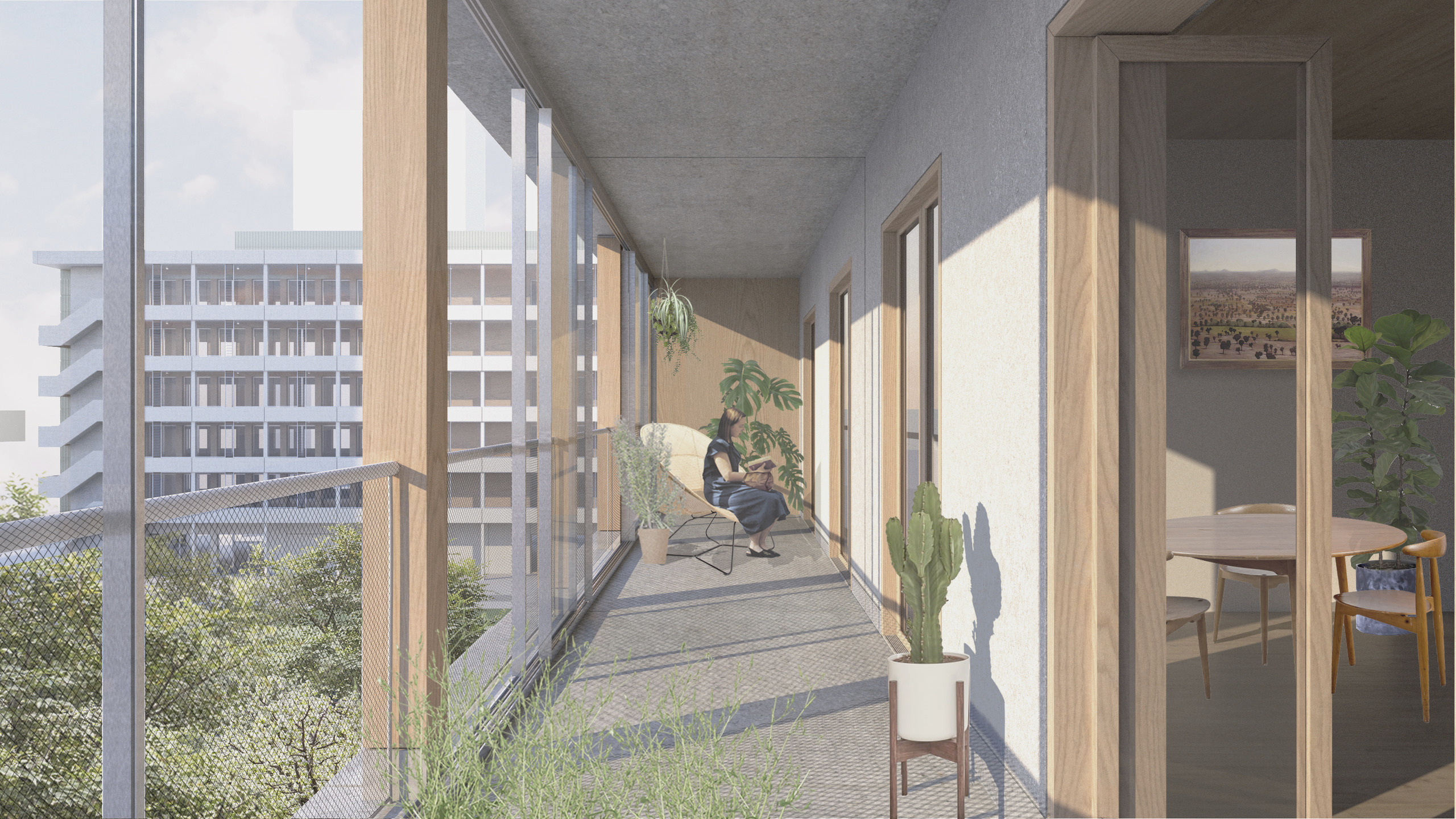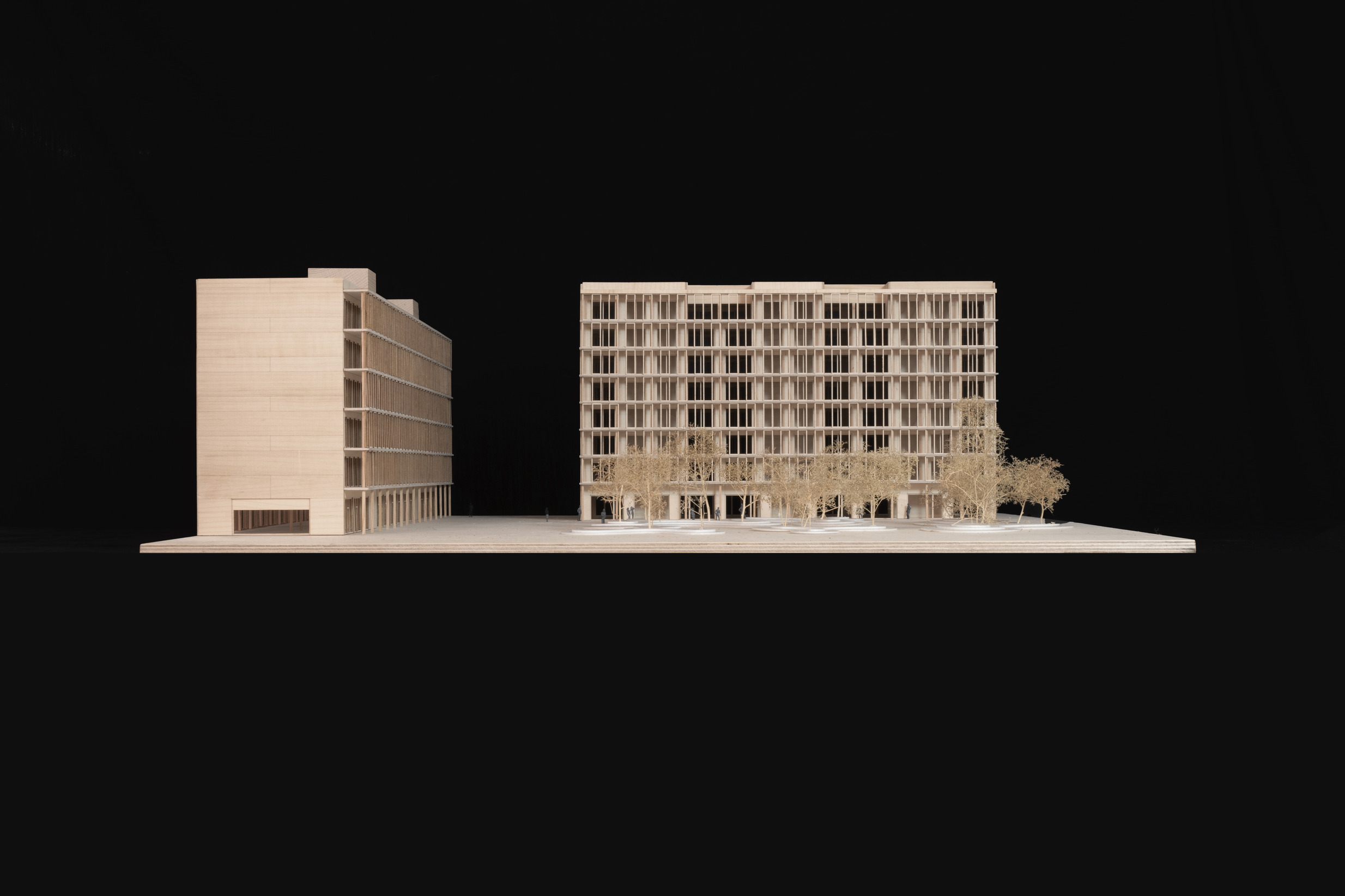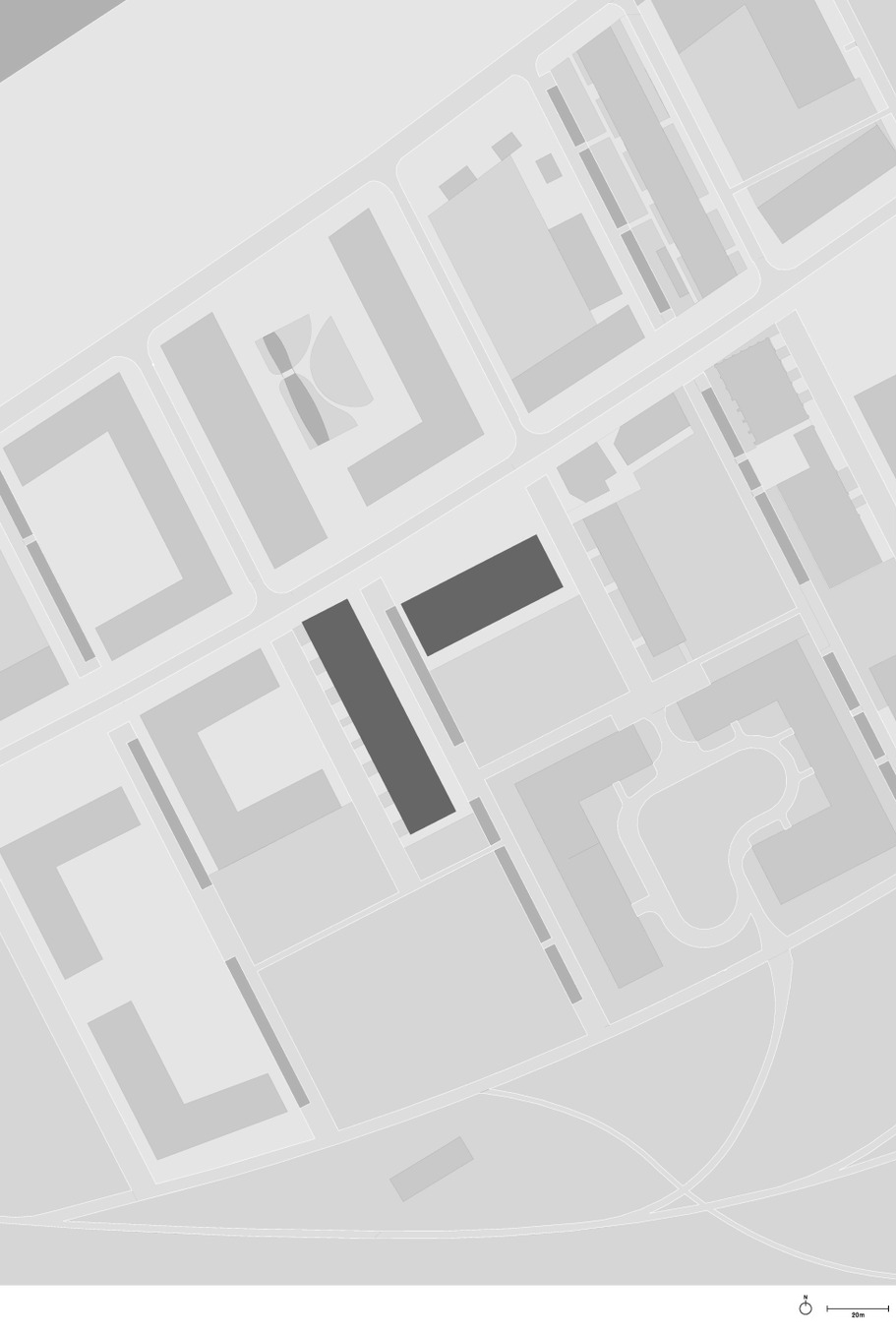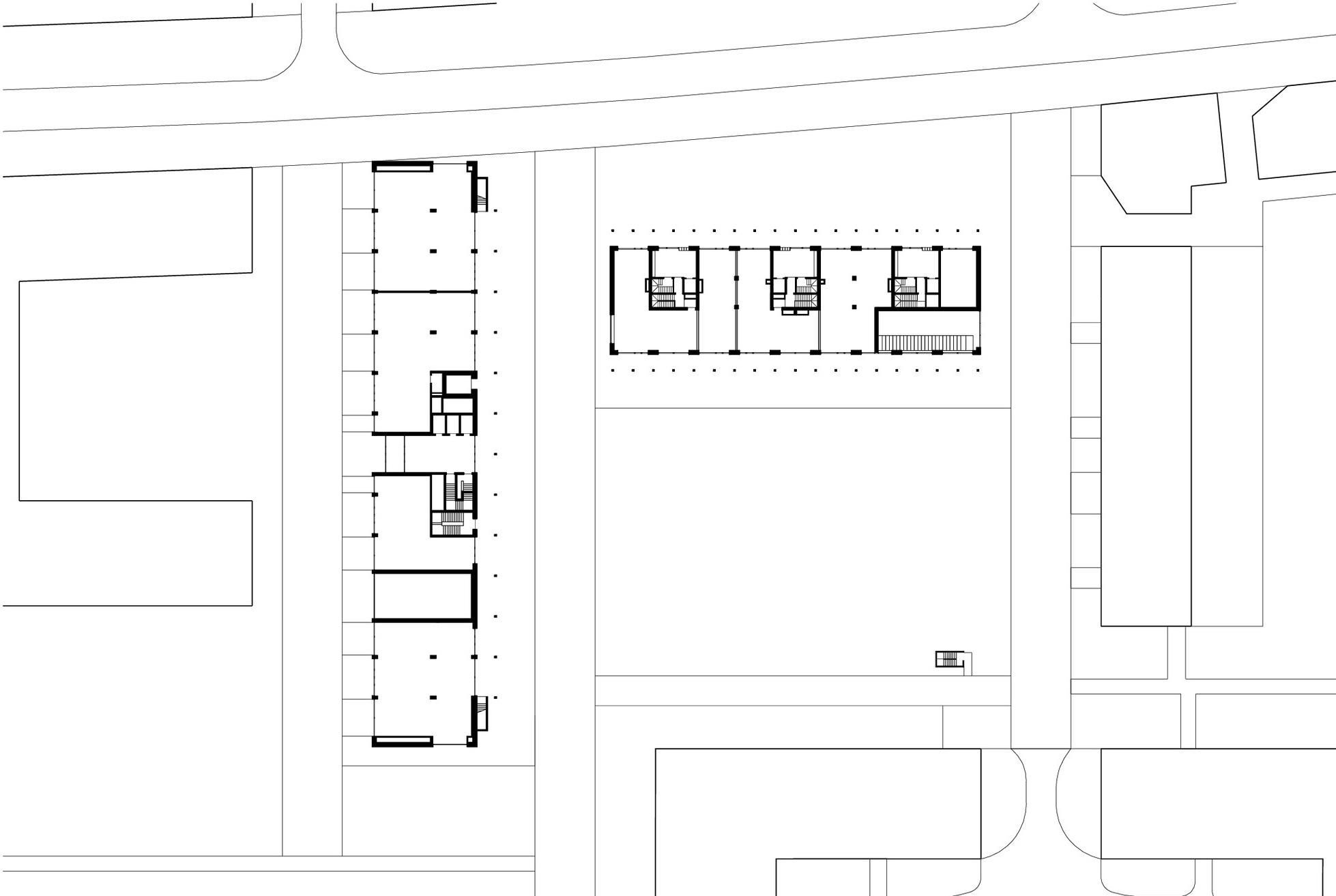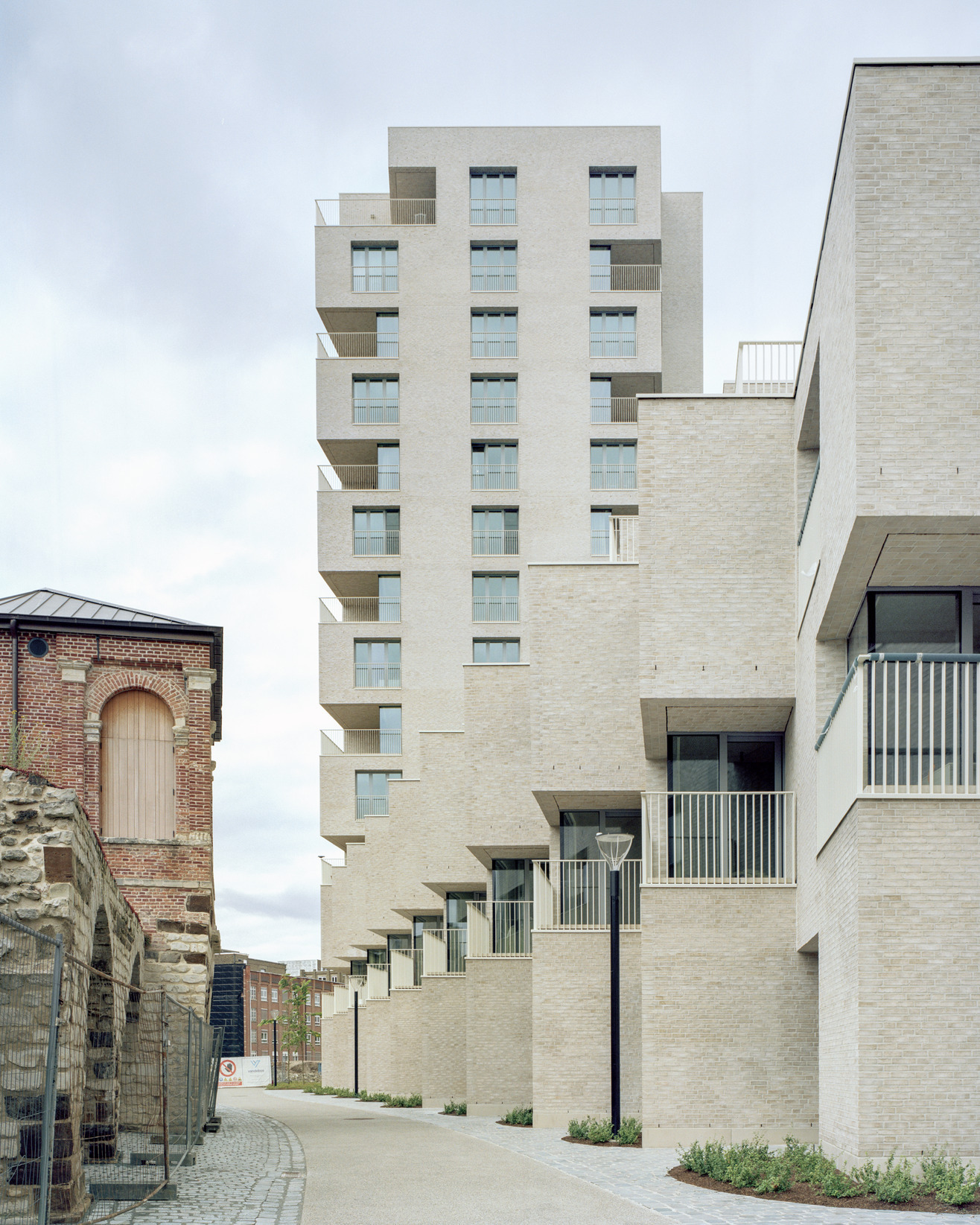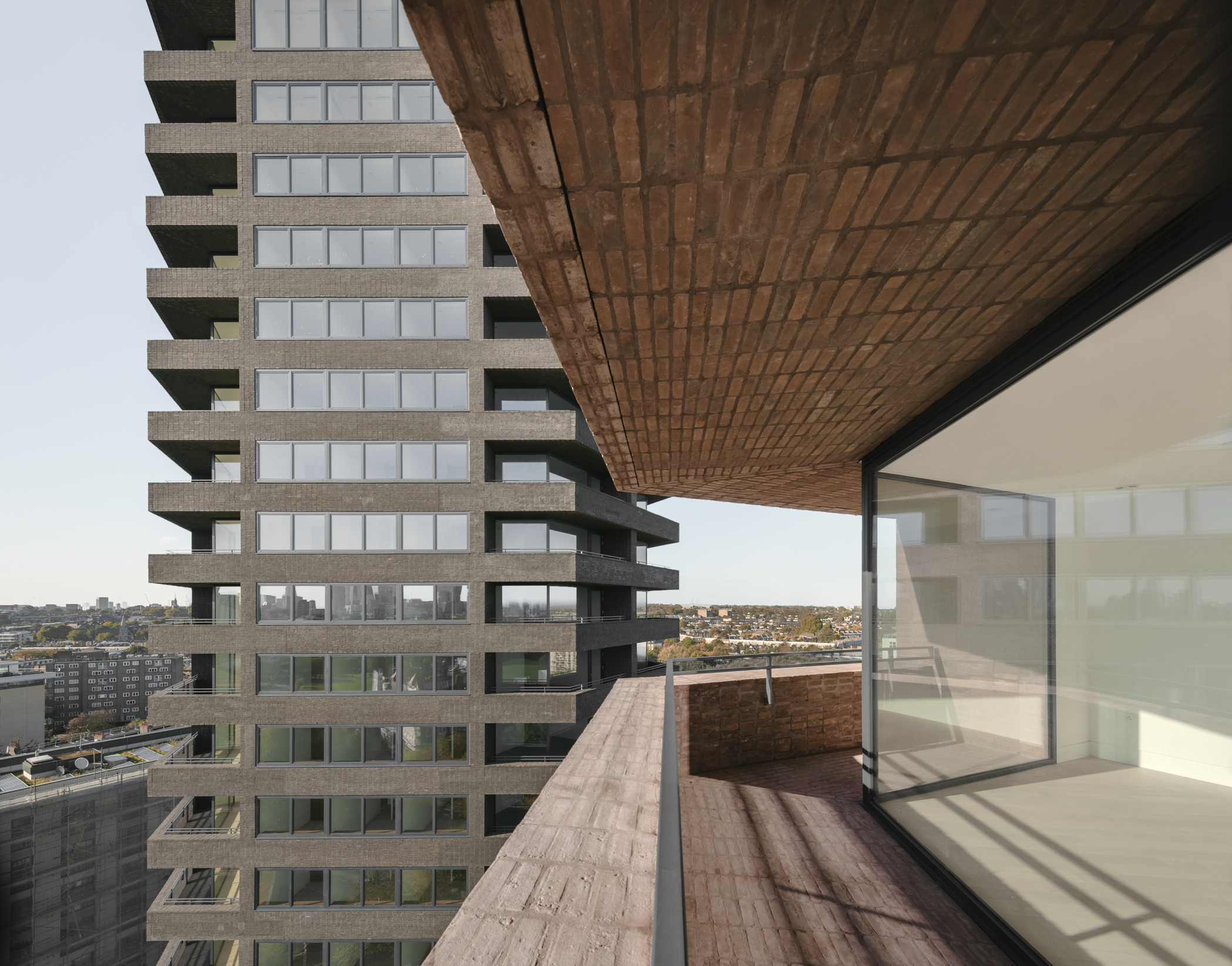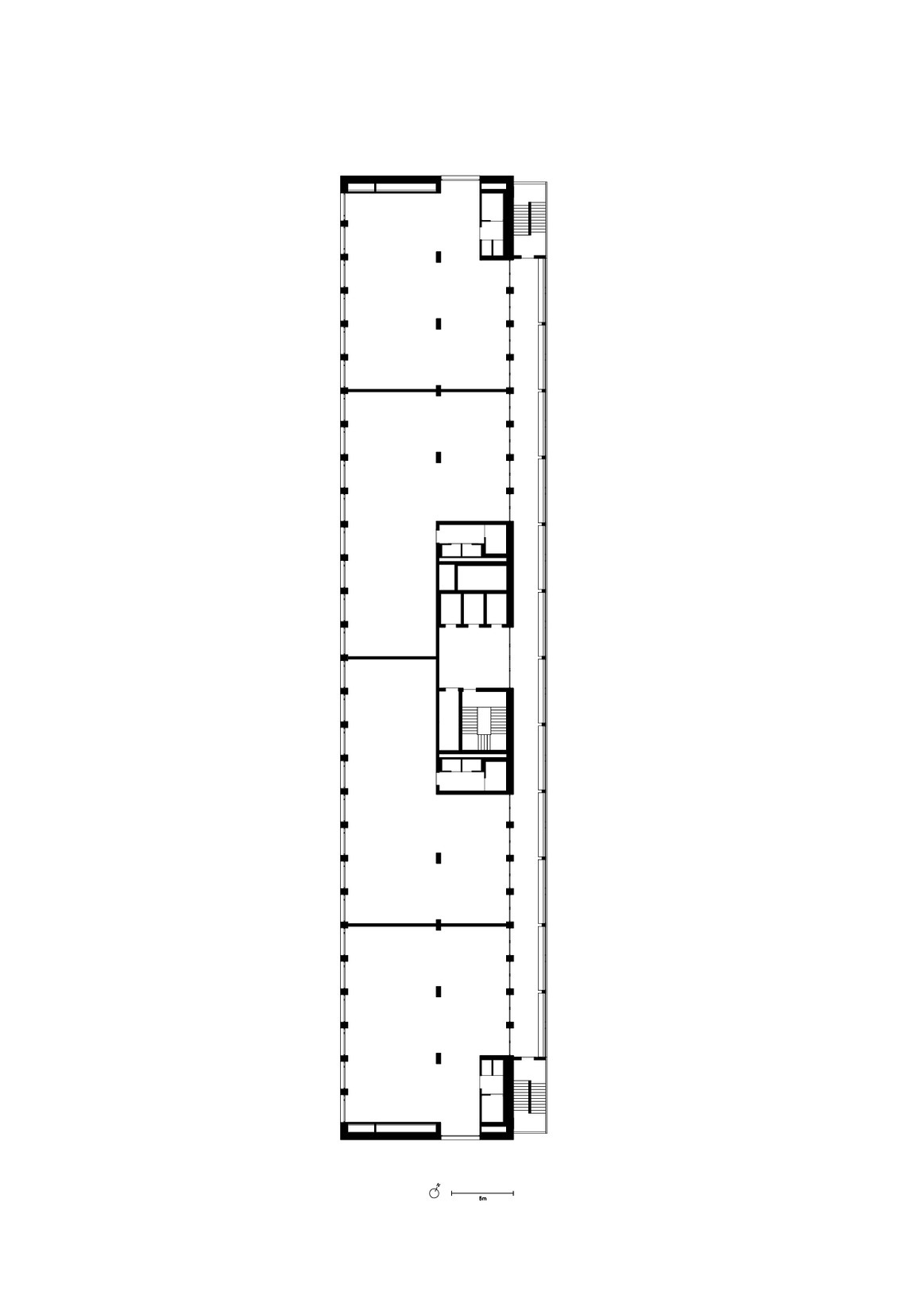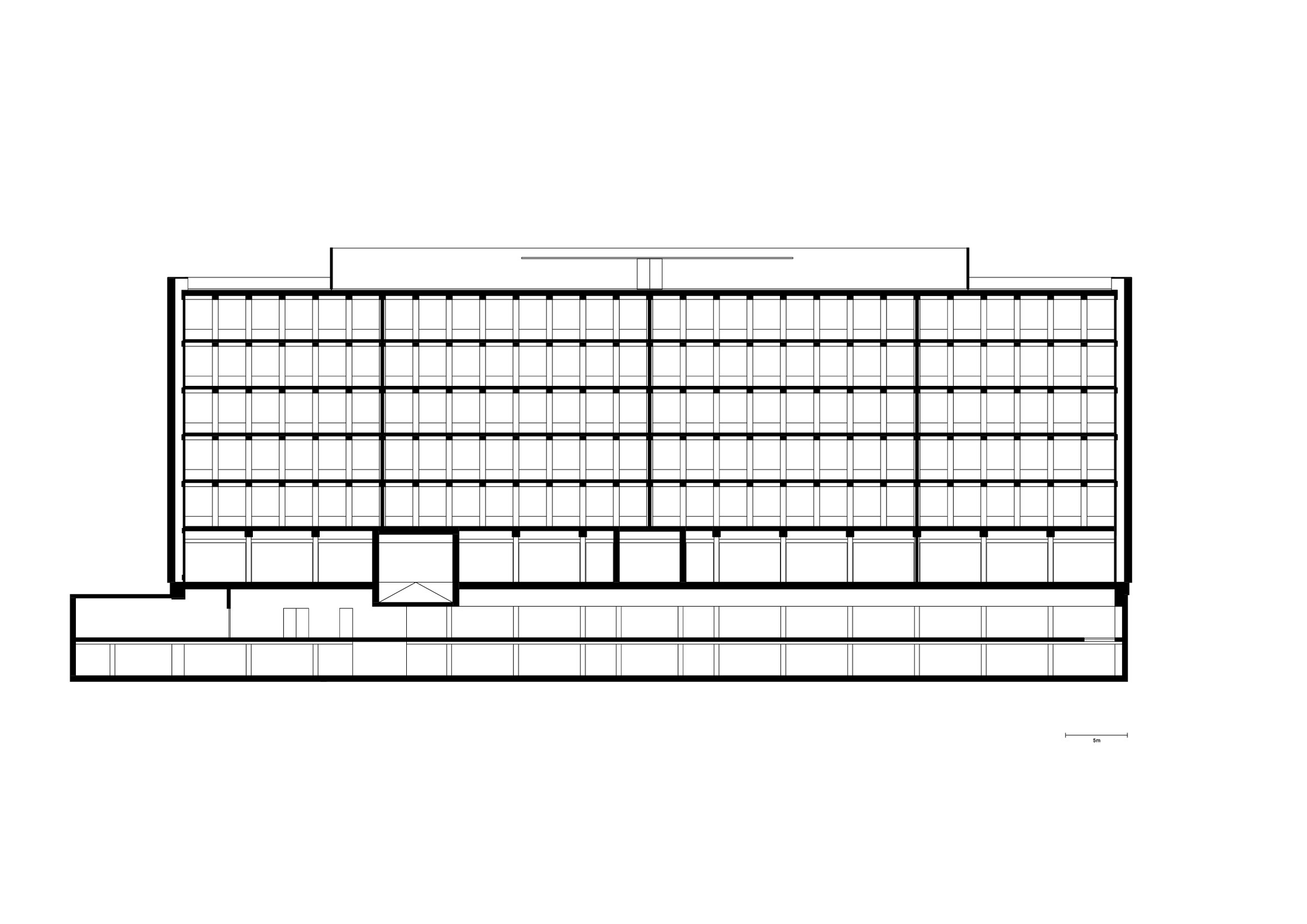Nieuw Zuid residential and office buildings
Antwerp, Belgium
2019–
Nieuw Zuid is a new neighbourhood located on a brown-field site to the south of the historic centre of Antwerp, on the quays the River Schelt. The masterplan, designed by Studio Bernardo Secchi & Paola Viganò, defines a series of public and green spaces framed by buildings and bisected by a central thoroughfare. Different architects were invited to design the individual blocks with most opting for a U-shaped plan framing a garden or square. In contrast to this approach David Chipperfield Architects’ design proposes two perpendicular buildings: one residential and the other offices which together define a central garden.
The two buildings have a shared architectural and spatial character that is determined by their elongated orthogonal forms, hybrid timber and concrete structures, and continuous winter gardens along their long façades. These decisions were largely informed by environmental considerations: the winter gardens act as a buffer space helping maintain more comfortable internal conditions at all times of the year; the use of timber reduces the embodied carbon of the construction; and the shallow depth of the buildings maximises natural light and cross ventilation. The winter gardens also give life to the area through the variety of activities that are visible within.
The apartment building sits between the development’s main thoroughfare to the north-west and the garden square to the south-east. Its two broad façades open to these public spaces with winter gardens ensuring that each apartment has a private outdoor space and a connection to nature. Three circulation cores allow the apartments to stretch through the depth of the plan, enabling all apartments to be dual aspect.
The office building is designed for future flexibility and each floor can be easily sub-divided. A central circulation core opens towards a winter garden gallery that runs along the east side of the building, overlooking the central square. The gallery connects the areas both physically and socially, creating a space for people from different offices to meet in an environment that follows the light and conditions of the changing seasons. On the ground level of both buildings, colonnades provide a sheltered area giving access to the entrances and retail units and creating transitional spaces between the buildings and their surroundings.
Data and credits
- Project start
- 2019–
- Gross floor area
- Residential 5,575m². Office 6,485m²
- Client
- Triple Living
- Architect
- David Chipperfield Architects London
- Partners
- David Chipperfield, Benito Blanco, Billy Prendergast
- Project architect
- Laura Burley, Tram Huong Ngo, Luke Gleeson
- Project team
- Alba Azuara, Anahita Brahmbhatt, Carlo Vincelli, Daniela Puga, Eleanor Catlin, Joana Ribeiro, Jochen Glemser, Joe Hewlett, Julien Gouiric, Jusin Park, Patricia Fredborg, Ricardo Alvarez, Richard Marks, Sarah Cheung, Simone Michel, Yiting Zhou
- Local architect
- Bureau Bouwtechniek
- Landscape architect
- Bureau Bas Smets
- General contractor
- Van Laere
- Structural engineer
- M-gineers
- Services engineer
- M-gineers
- Timber structural specialists
- Woodshapers



